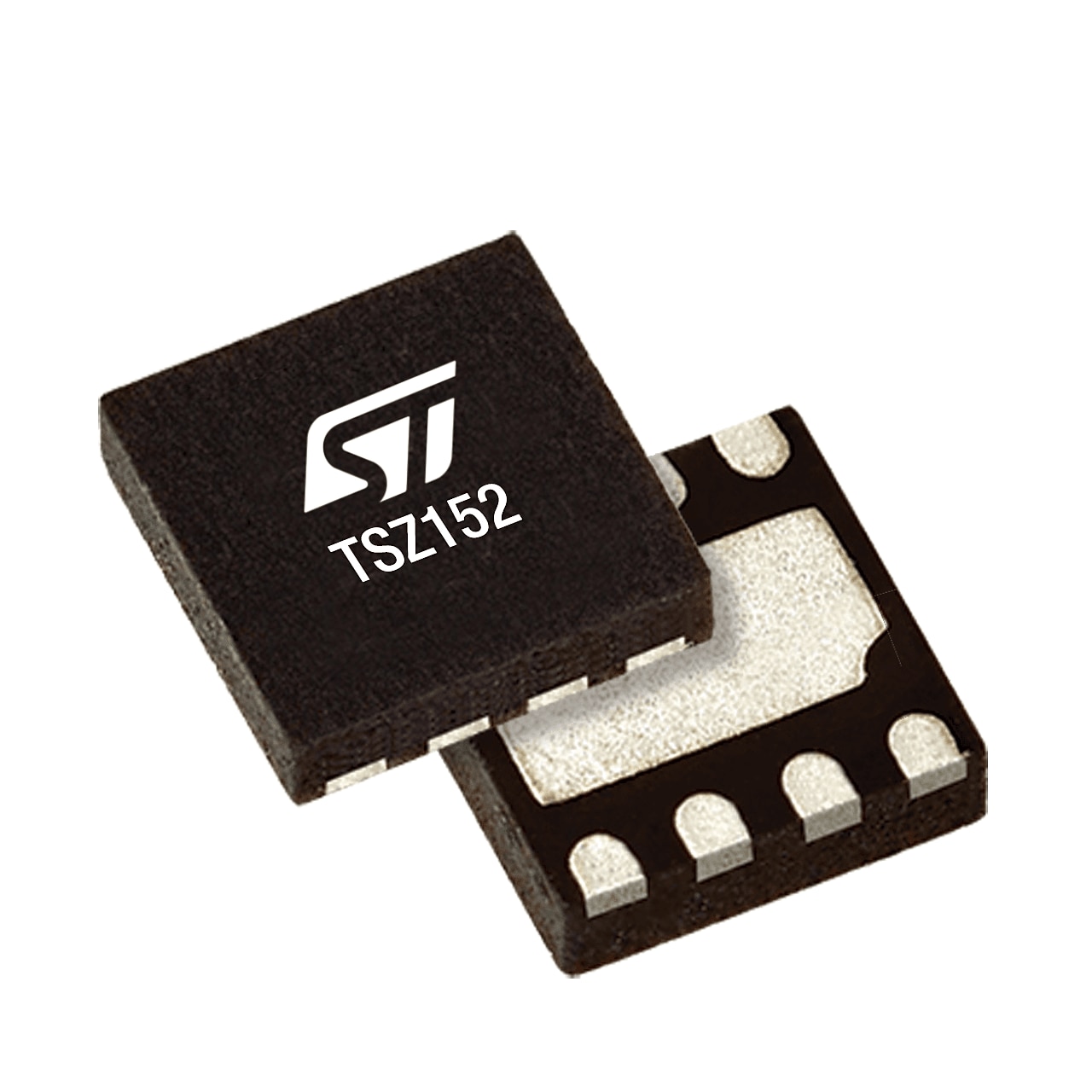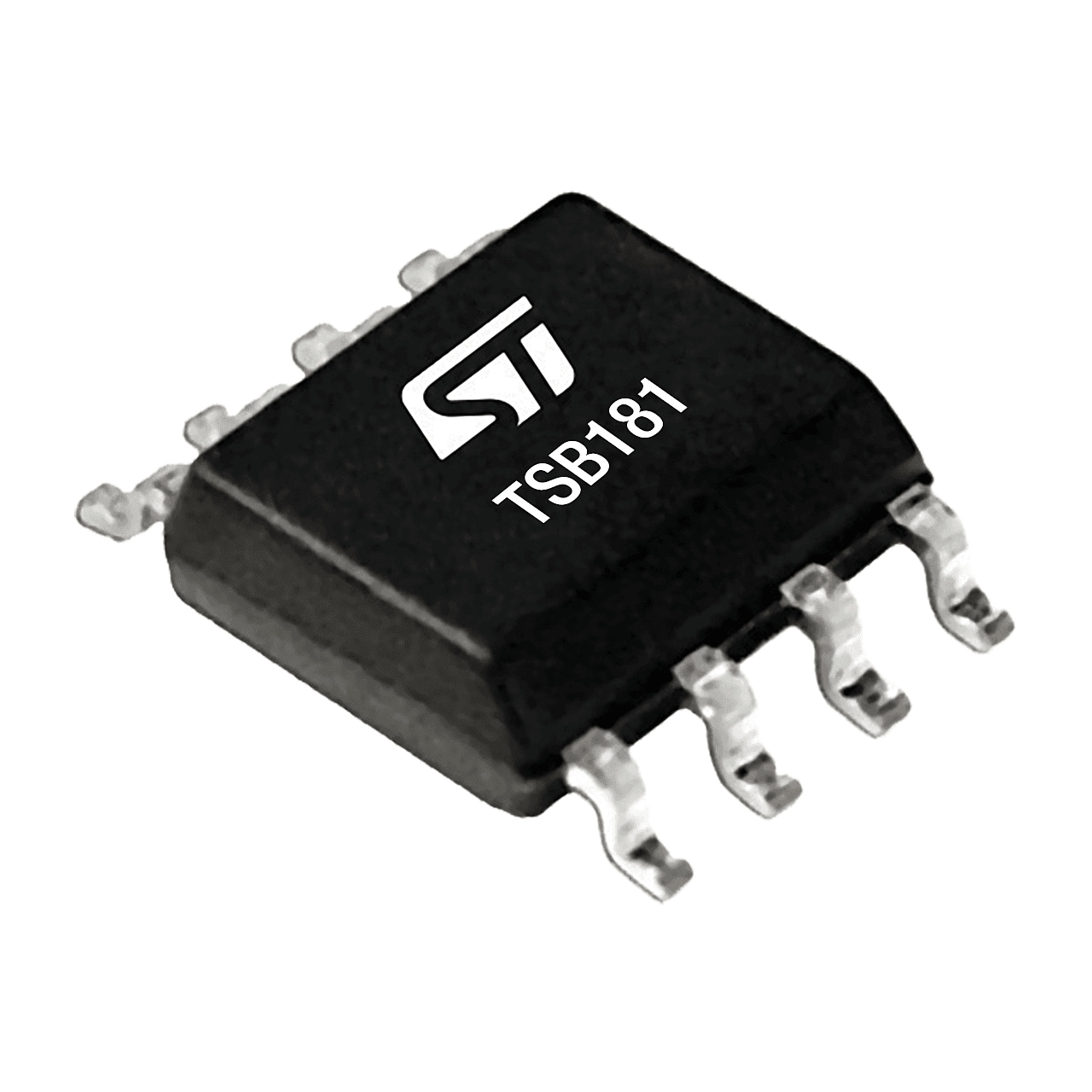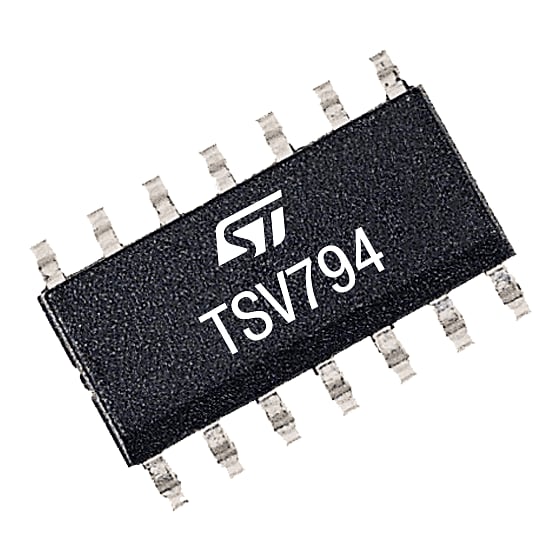Operational amplifiers, known also as op amps, play a major role in analog signal conditioning applications. Invented by Karl Dale Swartzel Jr. in 1941, these products are largely used in today’s electronic devices.
They are key enablers for industrial applications towards industry 4.0 and for automotive customers on their transition to electrification.

ST's operational amplifier portfolio provides a unique choice of high performance, low-power, precision op amps and tiny packages.
It addresses voltages from 1.5 to 44 V and operating temperatures from -40 to 175°C.
What are op amps used for and why you should choose ST’s op amps
Operational amplifiers are primarily used for:
- AC and/or DC signal amplification
- Buffering
- Driving signals
- Gain and level shifting
- Filtering
- Performing mathematical operations
But there is more, by choosing our products you also benefit from:
- Largest micropower op amp portfolio on the market, with consumption as low as 600 nA
- High volume supplier of highly reliable standard and high-performance op amps
- Space-saving packages including CSP, DFN, QFN, SOT-23 and SC-70
Types of operational amplifiers
Each application has a suitable operational amplifier: Discover our ever-increasing range of op amps designed for the challenging industrial, automotive and consumer markets.
-
Low power op amps
Operational amplifiers with exceptionally low current consumption, enabling longer battery life and designed for a large diversity of applications.
-
Precision op amps
ST's precision op amp solutions include zero drift amplifiers and amplifiers with a low offset drift over temperature. They are a perfect fit for use with any sensor, including gas, temperature, pressure and position sensors.
-
Low input bias current op amps
Our portfolio is a perfect fit for any transimpedance usage or when dealing with high impedance sensors.
-
Rail-to-rail op amps
Our rail-to-rail operational amplifier portfolio includes several series covering different voltage ranges, as well as many possible combinations of power consumption and gain bandwidth.
-
High voltage op amps
Featuring an extended supply voltage range from 2.7 up to 36 V, our high-voltage series simplify the design of a wide variety of automotive and industrial applications: filters, power supply and motor control, actuator driving, hall effect sensors and resistive transducers.
-
High speed op amps
ST offers a portfolio of high-end, high-speed operational amplifiers.
Featured op amps
Op amps for Automotive Applications
Discover our automotive-grade op amp portfolio featuring extreme reliability and quality demanded by automotive applications.
See all Automotive op ampsST's op amps series at a glance

Featured Videos
Recommended for you
High-performance series of 5 V rail-to-rail operational amplifiers
The TSV771, TSV772, and TSV774 are a series of single, dual, and quad operational amplifiers ideal for low-side current measurement, combining high accuracy and low power consumption.
Enlarging ST’s high-performance 5V op amps family, the devices feature also rail-to-rail inputs / outputs, 20MHz gain-bandwidth (GBW), and is unity-gain stable. With a slew rate of 13V/µs, 7nV/√Hz input noise density, and 4kV ESD capability (HBM), the TSV772 is a strong all-round performer in a very small 2.0mm x 2.0mm DFN8 package.
Automotive grade version is also available.
Signal conditioning for better energy management
Select the best operational amplifiers and monitoring ICs to improve your design for virtually any personal electronics, automotive, and industrial application such as renewable energy, e-bikes, telecom, automation, and others.
Deep dive into featured products:
TSZ151 and TSZ152: high-precision operational amplifiers for sensor interfaces
The TSZ151 and TSZ152 are single and dual operational amplifiers that offer outstanding accuracy and stability, very low input offset voltage (7 μV at 25 °C), and minimal temperature drift.
The rail-to-rail input and output, 1.6 MHz gain bandwidth product, and ultra-low input bias current make the devices the ideal choice for high-accuracy sensor interfaces.
The TSZ151 and TSZ152, which are AEC-Q100 automotive qualified, have a low power consumption of just 210 µA at 5V, offering an excellent speed-to-power consumption ratio.
Questions / Answers
What are the main characteristics of ideal and real op amps?
Ideal op amp | Real op amp |
| Infinite bandwidth: all frequency signals are amplified without attenuation. | Each op amp has its specific gain-bandwidth product: input frequency should not exceed this particular frequency range at the desired gain. |
| Infinite input impedance: in order not to affect upstream circuitry. | Very high, but finite input impedance. |
| Zero output impedance: in order not to affect downstream circuitry. | Very low, but not zero output impedance. |
What are the main applications for op amps?
It can be easily said that op amps are present in almost all electrical devices and can be used for various applications, depending on the external components/circuitry or topology.
Differential amplifier (difference amplifier)

Amplifies the difference in voltage between its inputs.
Inverting amplifier

An inverting amplifier is a special case of the differential amplifier producing an output which is 180° out of phase with respect to its input.
Non-inverting amplifier

In this case, the output voltage is always in phase with the input voltage, which is why this topology is known as non-inverting.
Voltage follower (unity buffer amplifier)

This circuit does not generally require external components, and provides high input impedance and low output impedance, which makes it a useful buffer.
eDesignSuite
eDesignSuite is a comprehensive set of easy-to-use design-aid utilities ready to help you streamline the system development process with a wide range of ST products.



Power Management Design Center
Thermal-electrical Simulators for Components
Signal Conditioning Design Tool
NFC/RFID Calculators

Power Supply Design Tool

LED Lighting Design Tool

Digital Power Workbench

Power Tree Designer

STPOWER Studio

PCB Thermal Simulator

AC Switches Simulator

Rectifier Diodes Simulator

Twister Sim

TVS Simulator

Estimate

Active Filters

Comparators

Low side Current Sensing

High side Current Sensing

NFC Inductance

UHF Link Budget








